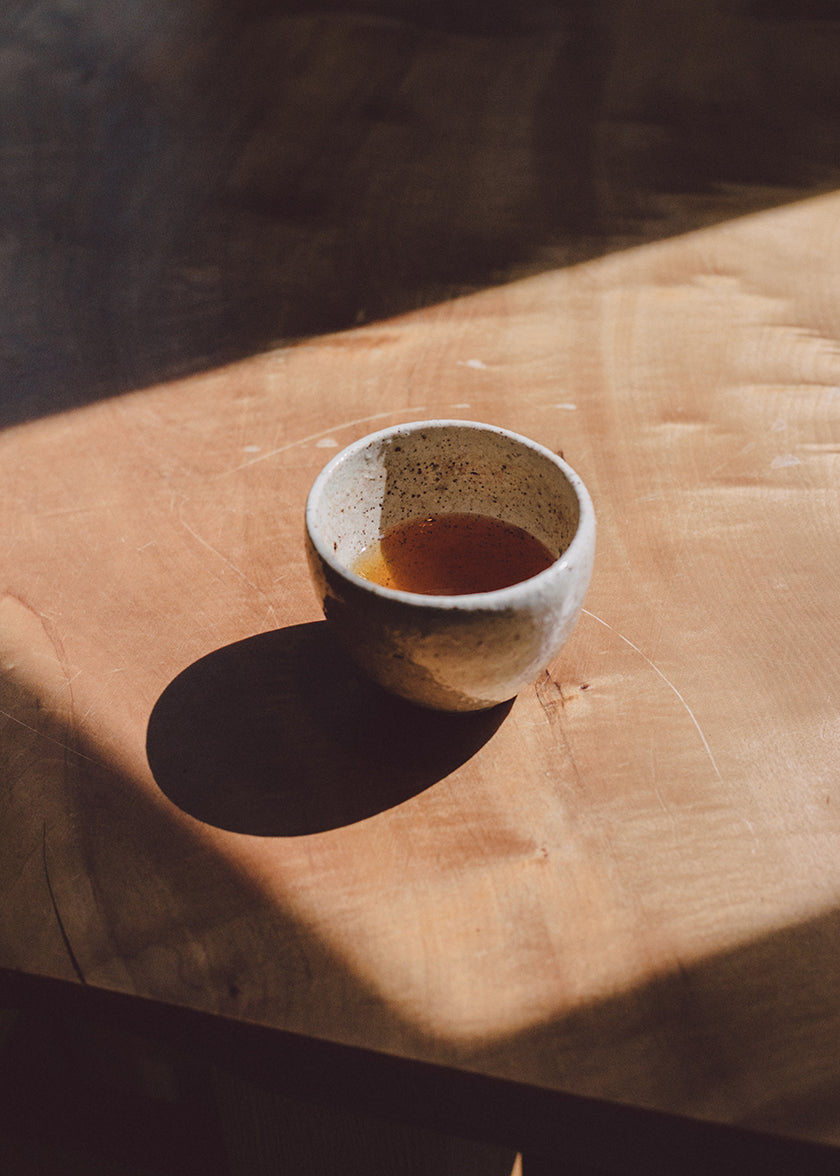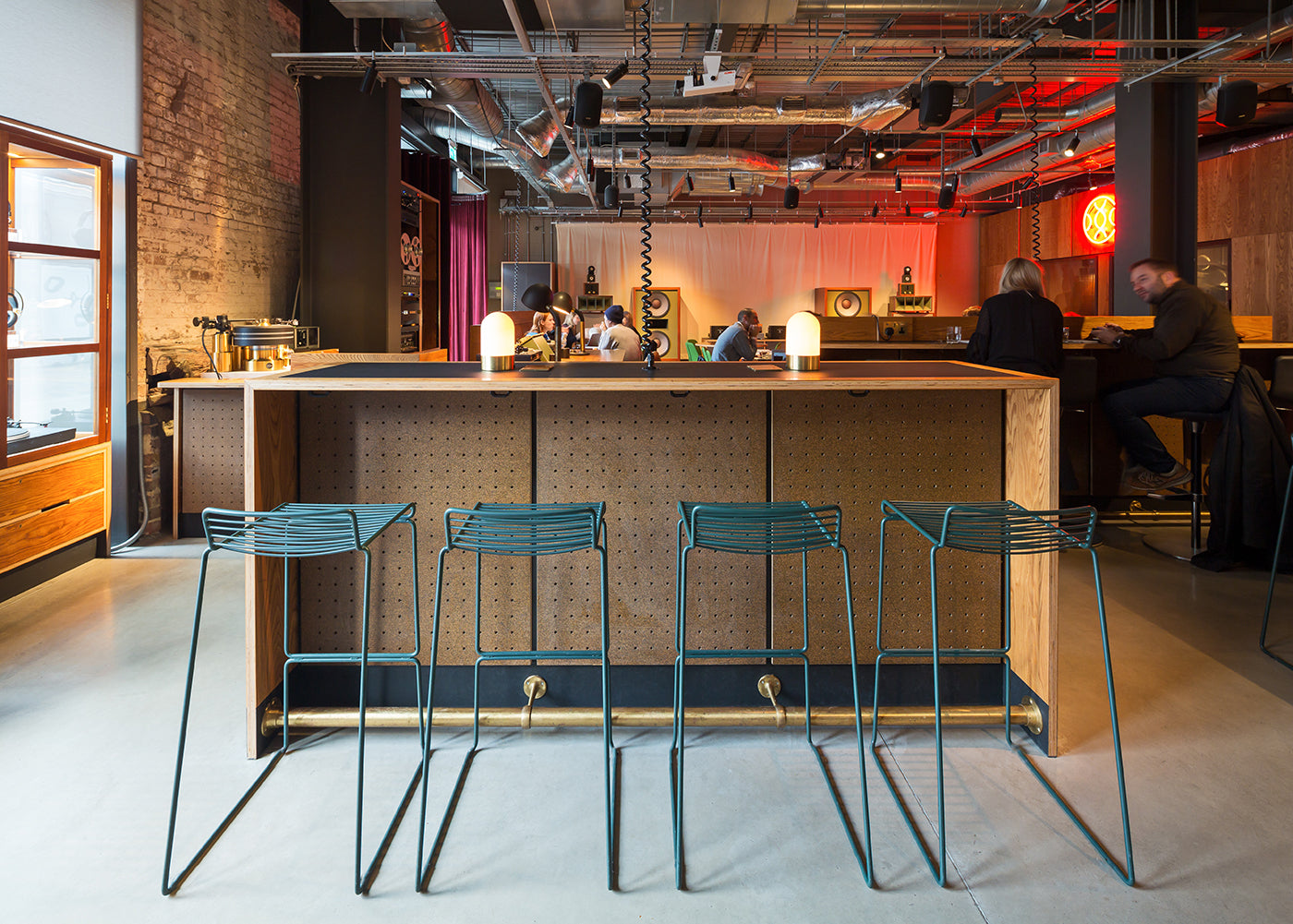Your Cart is Empty
Buy a book, plant a tree.
Music isn’t coming off the menu anytime soon, but an innovative new revolution is helping us consider the food and music relationship in a different way

Understanding your purpose is especially important in the restaurant world, anybody can serve a similar menu–but the purpose is what makes a restaurant stand out in a fierce crowd. From extraordinary locations to hyper-local cuisine, our new book Delicious Places is a gastronomy journey into a world of restaurants and bars pushing the scene to exciting new heights. Experiences in the culinary world are becoming ever more intertwined, from the sounds that enhance your meal to the locality of the produces that have been selected. We explore two stories from the book that asks provocative questions about the purpose of music in the food world.

The restaurant music revolution begins with renowned composer Ryuichi Sakamoto, of Yellow Magic Orchestra, and composer for The Revenant and The Last Emperor, plus countless film scores. When you dine, everything matters. It influences your decision on whether or not you decide to return to the same restaurant. Not just the food and service-interior decoration, music, and of course, hospitality and great conversation. You've probably never selected a venue because of the music, but perhaps left because of it. This was a dilemma that started a conversation about the purpose of music in restaurant culture.

Living in New York City's West Village, Sakamoto was craving Japanese food and went to Kajitsu in Murray Hill to dine. A regular diner at the restaurant, Sakamoto was left aggravated by the music inside, not because it was loud, but because it was thoughtless. He couldn't bear the music anymore so spoke to the chef Hiroki Odo about it, who was Kajitsu’s third chef and worked there for five years. Sakamoto went on to write Odo an email, where he asked, "Who chose this (the music)? Whose decision of mixing this terrible roundup? Let me do it. Because your food is as good as the beauty of Katsura Rikyu (the thousand-year-old palatial villa in Kyoto, built to some degree on the aesthetic principles of imperfections and natural circumstances known as wabi-sabi) … the music in your restaurant is like Trump Tower." Odo explained the music had been chosen by the restaurant’s management in Japan.

The pair came to a compromise: Sakamoto suggested taking over the job of choosing the music, without pay so he could feel more comfortable while dining. The owners agreed and allowed Sakamoto to create a playlist. Originally he wanted something ambient, but on reflection decided this didn't suit the interior and aesthetic of Kajitsu. In the end, the playlist was warm and upbeat, it included music from the likes of Nicolas Jaar, Oneohtrix Point Never, John Cage, Gal Costa, Nils Frahm, and Aphex Twin.
The playlist has now been made available via Spotify.
This wasn't something Sakamoto publicized originally, but the news eventually broke and media wanted to learn more about the arrangement. He told The New York Times, "Normally I just leave," he said. "I cannot bear it. But this restaurant is really something I like, and I respect their chef, Odo."
Restaurant culture is centered around the food and chef, but the experience is becoming an ever more influential part of what pulls us in. The prospect of limitless streaming services and popular playlists was meant to enhance the music experience inside restaurants, but many argue this has instead lowered the quality. Management tends to select what is popular or generic, regardless of whether or not it suits the interior, layout, or cuisine.

Although Sakamoto didn't set out to start a new discussion around the culinary and music relationship, his actions addressed something that has been bubbling up for a while now. Background music has become ubiquitous and unavoidable. The debate has fuelled multiple perspectives on the purpose of music in restaurant culture: Do we need music at all? Where does the obsession to eradicate silence come from? Why doesn't more consideration go into the matching of music with food?
Playlists and fine dining may come across as an unconventional pairing, especially if they are predictable and boring. Nobody wants to leave with a headache from the music being too loud or thoughtless, so Sakamoto's actions created a space to consider how music and food should interact within the future culinary world.

London has been a music melting pot over the decades, from Rock to Punk to Garage, and even Grime most recently, but its music scene has been under threat since the turn of the millennium. Faced with stricter laws, higher rents, and changing music tastes, London has seen several of its most iconic music venues close in recent years, including The Astoria, The Cross, Plastic People, and Madame JoJos to name a few. But businesses in London are being creative to keep these communities alive through innovative concepts, including Spiritland in King's Cross. A neighborhood in London once celebrated for its musical diversity has seen dozens of its establishments close over the years, but Spiritland has injected some life into the area since opening in 2016.
The venue is a café, restaurant, and bar that includes a world-class Living Voice sound system–a unique creation playing original, in-depth musical programming day and night, seven days a week, along with talks, album launches, and more. On the menu, you can expect to find breakfast classics granola or smoked salmon on eggs, a variety of bowls or pasta for lunch, plus more adventurous dishes like Biber Salçasi cauliflower for dinner.
Spiritland is also a workspace during the day, turning into a stylish bar in the evening with an inventive menu and a high-quality sound system tailored to the design of the space. Designed by Fraher Architects, the venue connects people through food, beverages, and creative events, the venue is also home to Spiritland Sound Studio, a radio production suite in which podcasts, programs, and live broadcasts are regularly produced. While London still has a long way to go to preserve its music scene, venues like Spiritland are offering hope to its community through an innovative approach that combines music and restaurant culture together.
The tastes that our tongues experience have never been so intertwined with the sounds our ears tune into while dining or socializing. Some prefer there to be no sounds at all, just the chatter of fellow diners conversing–while establishments still cater to this, they are on the decline. A couple of decades there was a rising shift in the culinary world, fashionable minimalism replaced opulence plush as a trend. Spaces were transformed for the eyes, and more recently Instagram, but turned into an ordeal for our ears. Minimalism brought in hard surfaces and tall ceilings, taking away soft chairs, curtains, and cushions–objects that absorb sound energy.

Combined with the rise of electronic music, endless playlist decisions, and the desire to create 'casual' spaces that are 'trendy,' culinary dining has turned up the decibels to almost harmful noise levels. Sakamoto’s actions in Murray Hill tackle the 'thoughtless' music selection in almost every section of the restaurant world but also highlights that acoustics is often an afterthought. Which is why spaces like Spiritland are helping guide the culinary world into new heights, while also acting as a space to help preserve a declining community of music lovers. Music isn't coming off the menu anytime soon, but restaurants can be creative about food and beverages are now presented alongside it.
Come and take a seat at the table, explore our Delicious Places book.